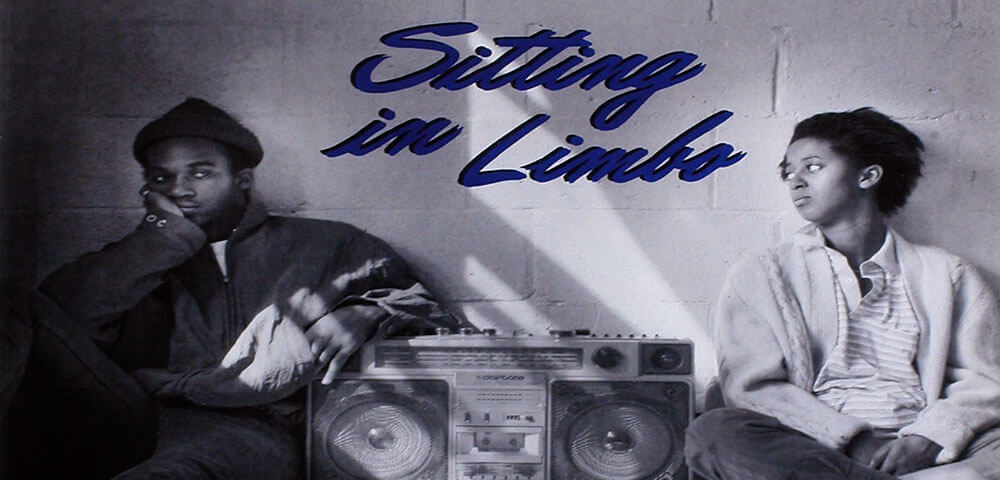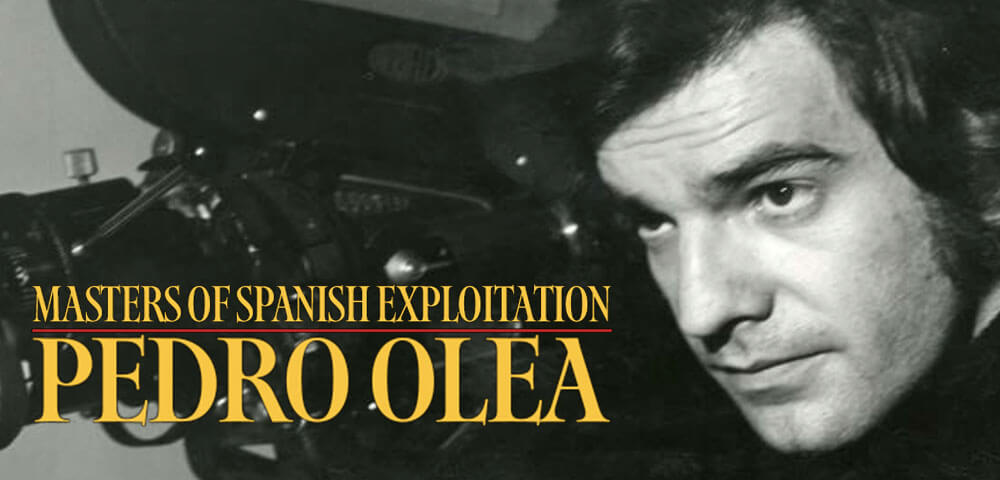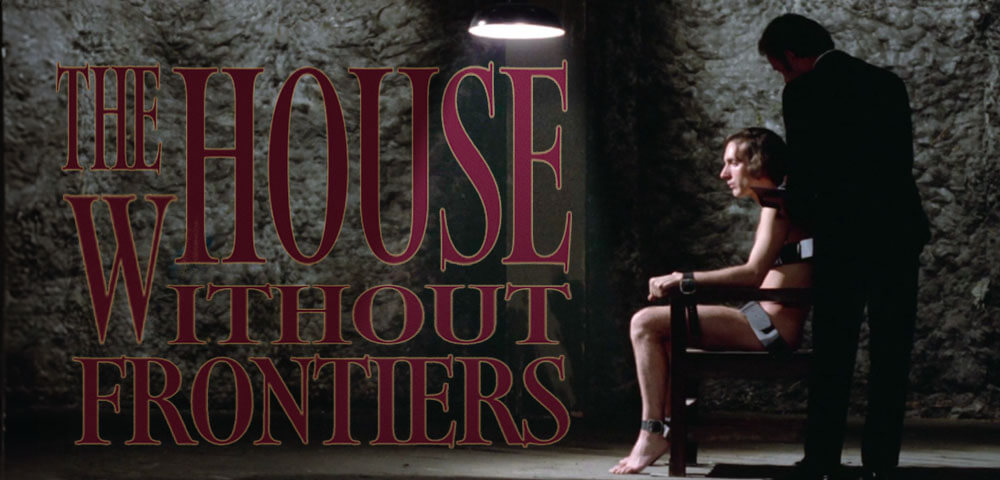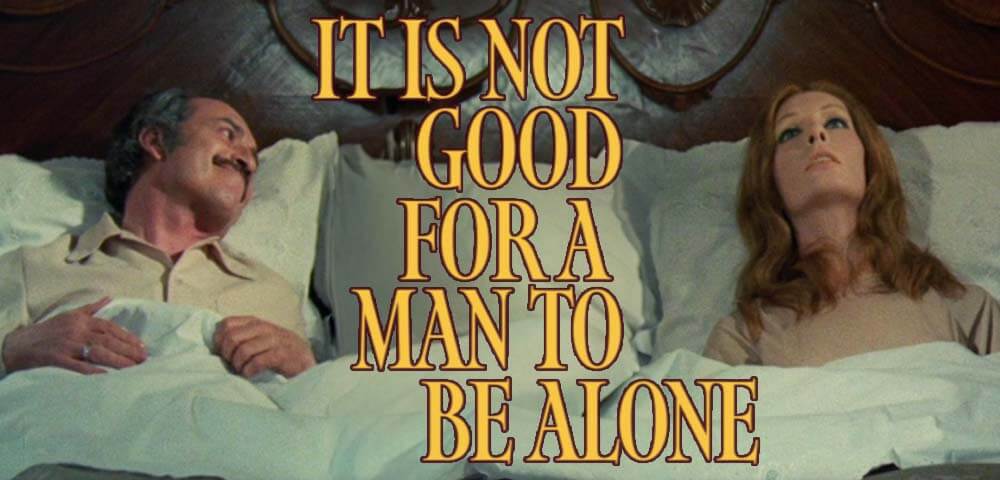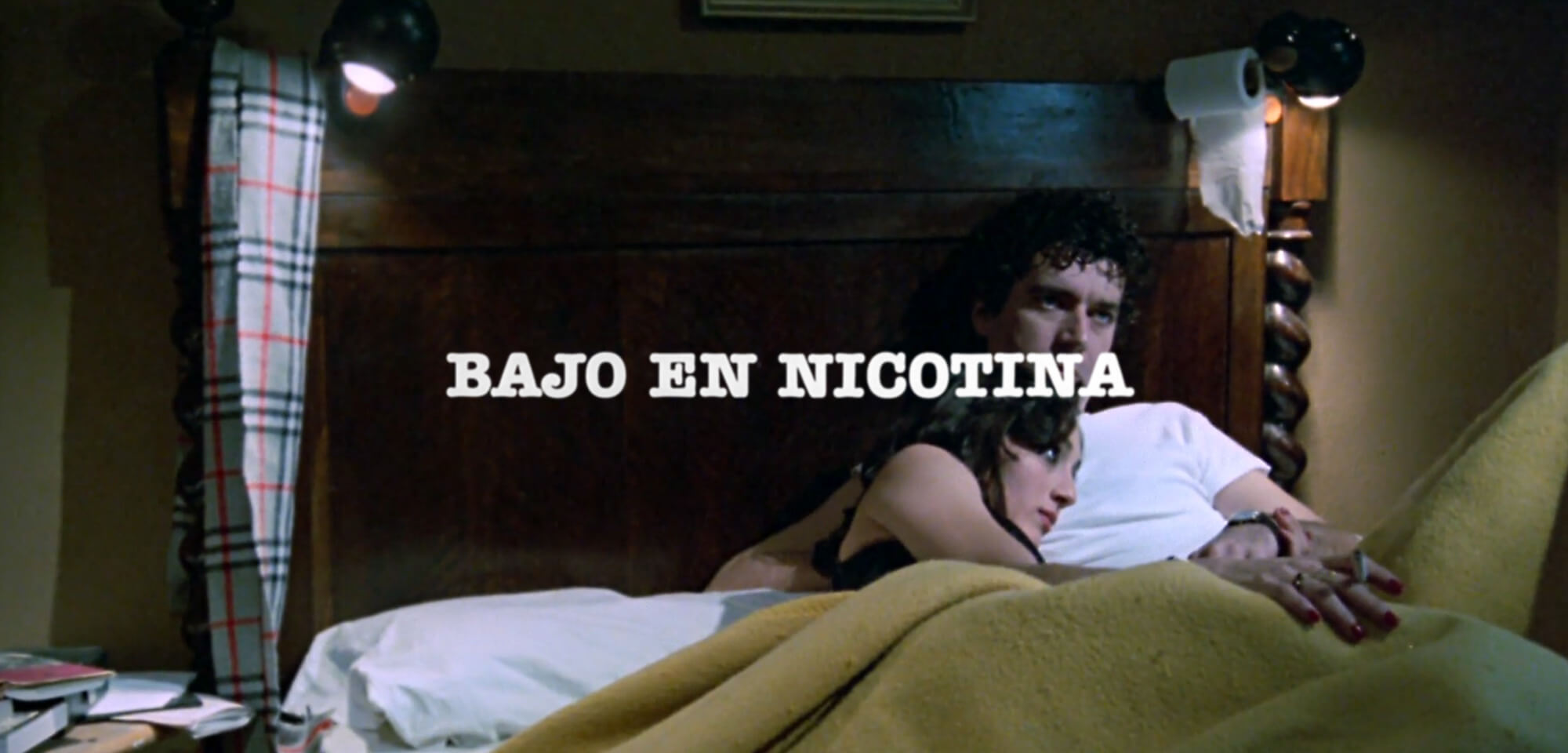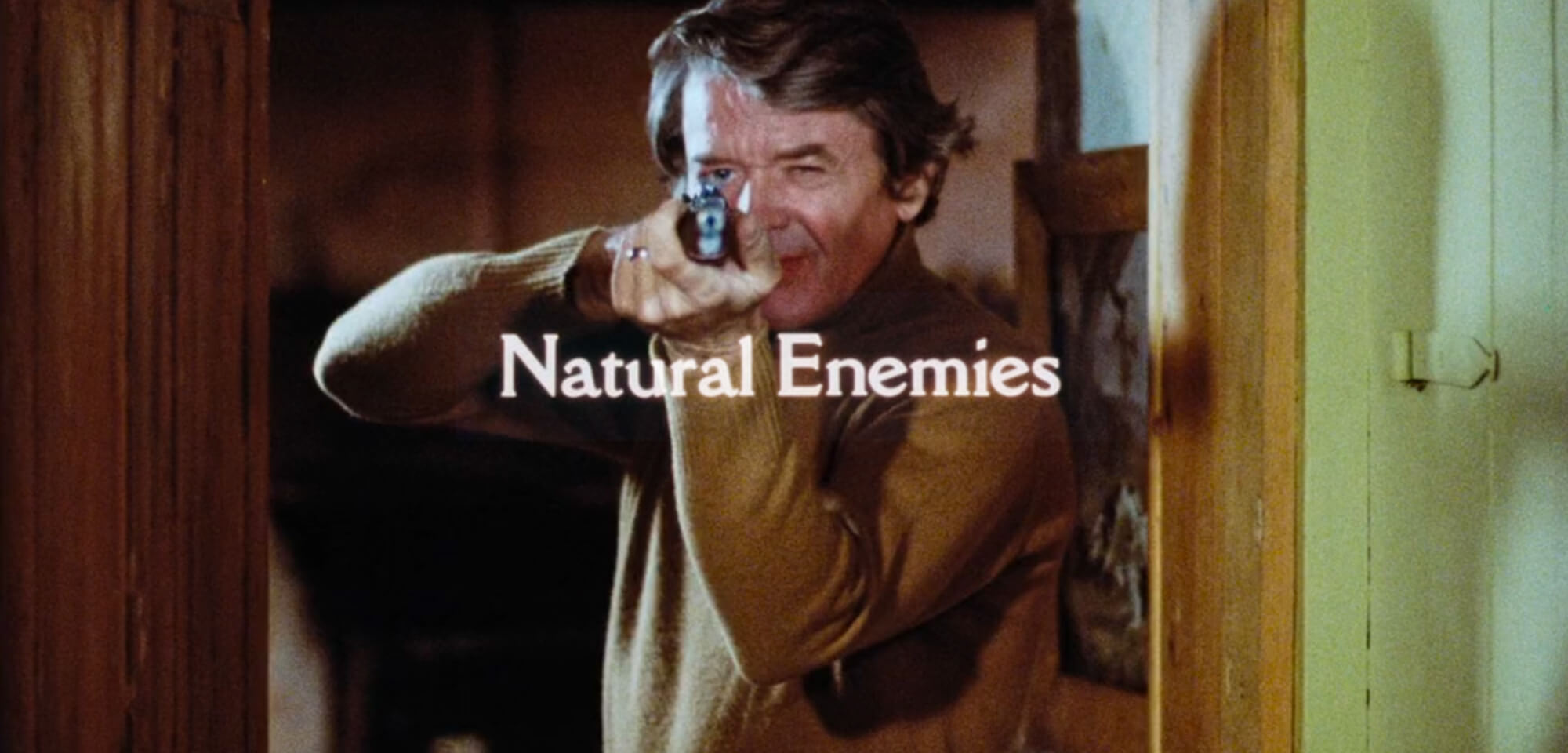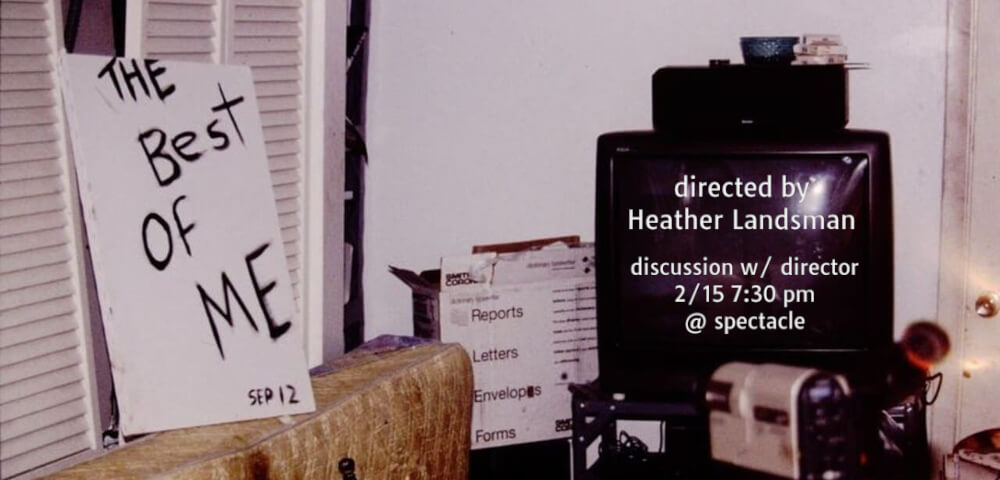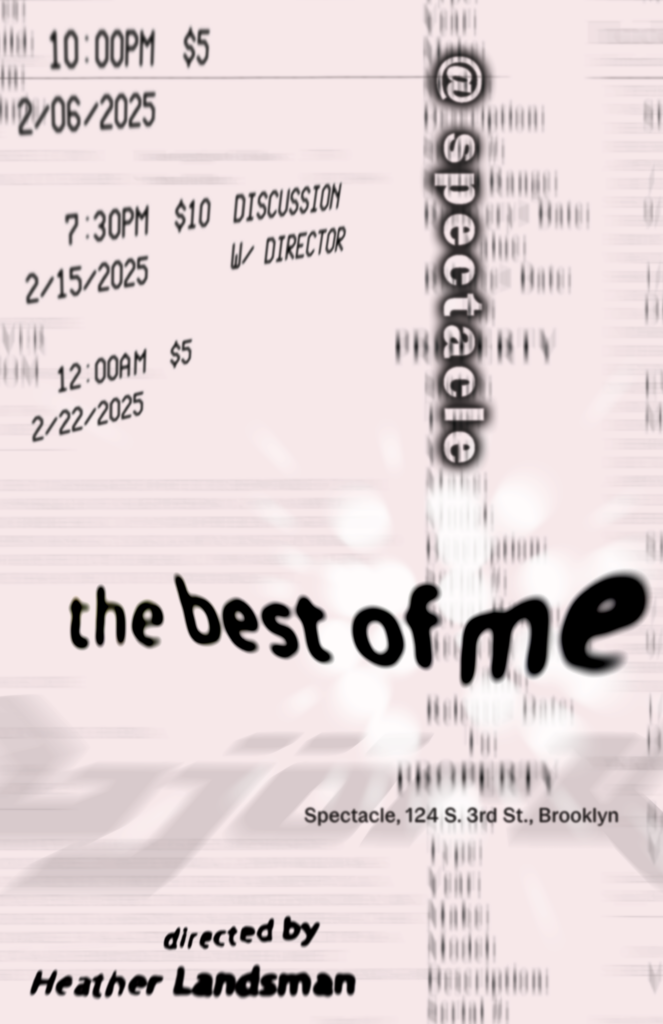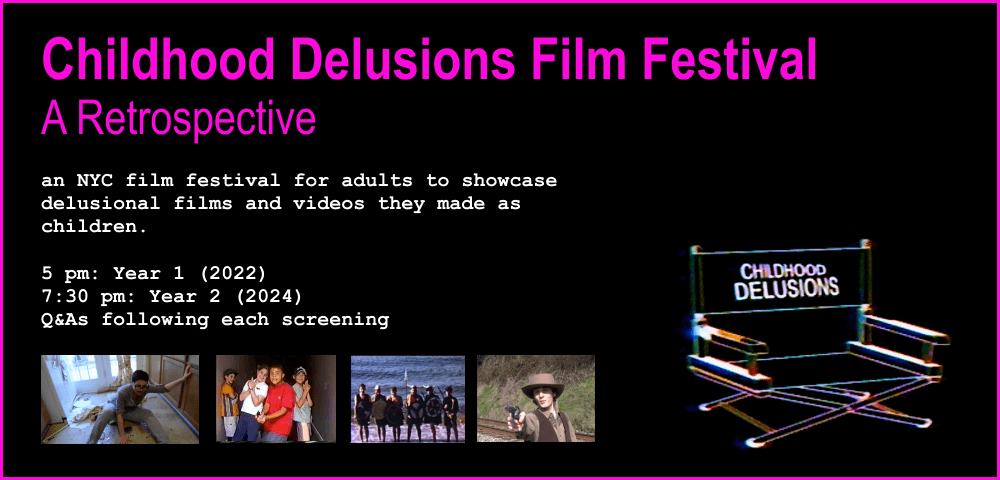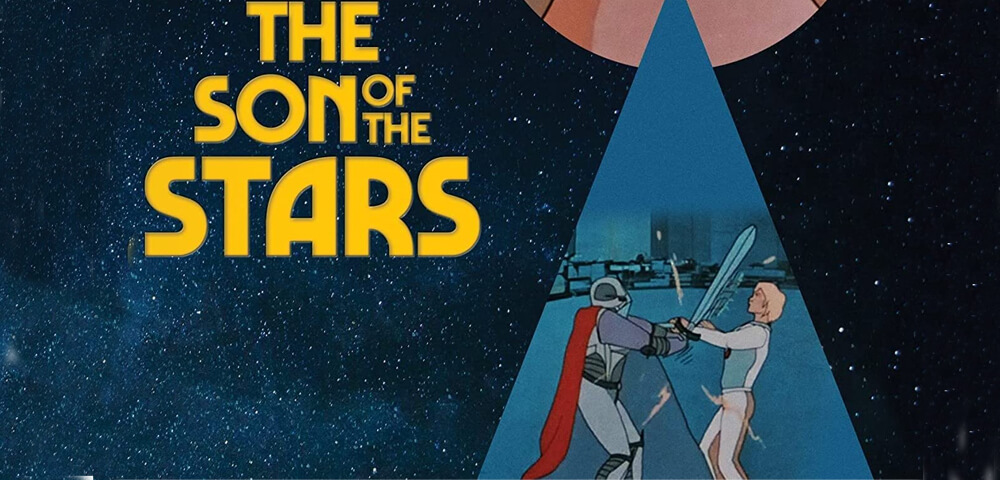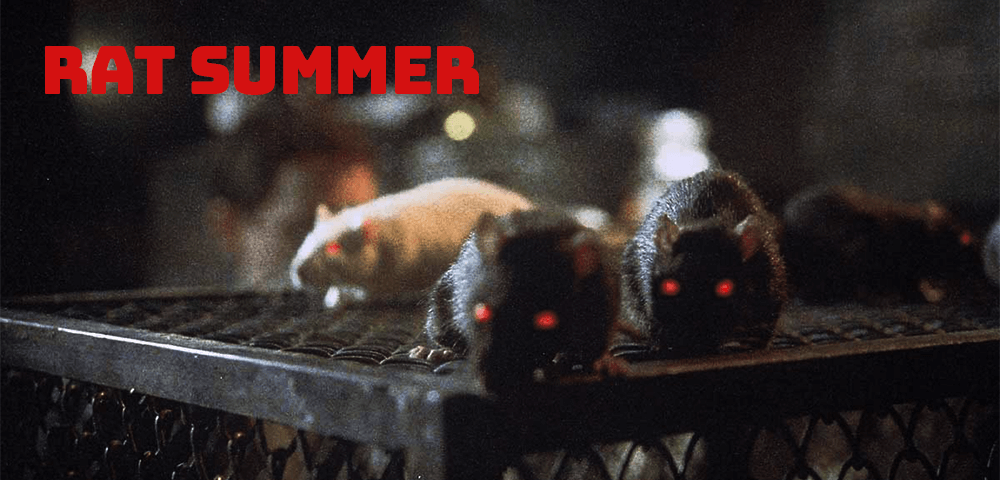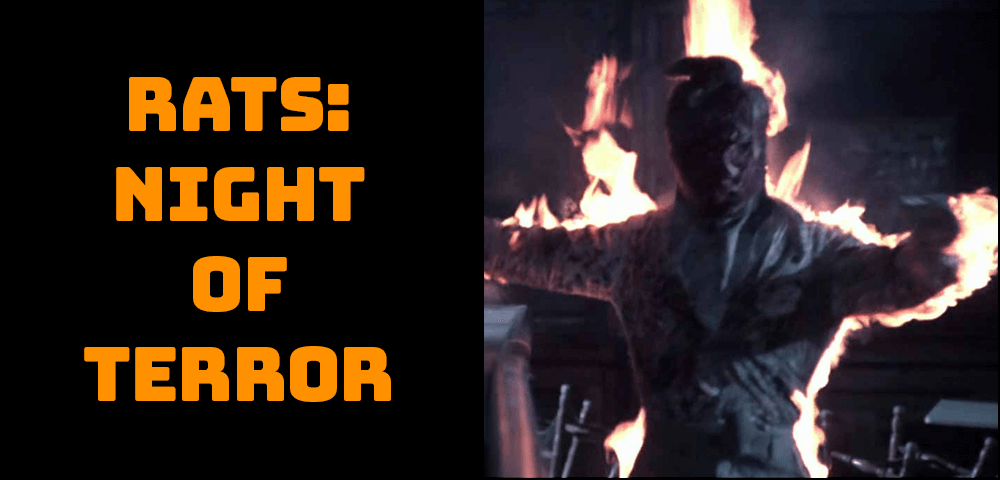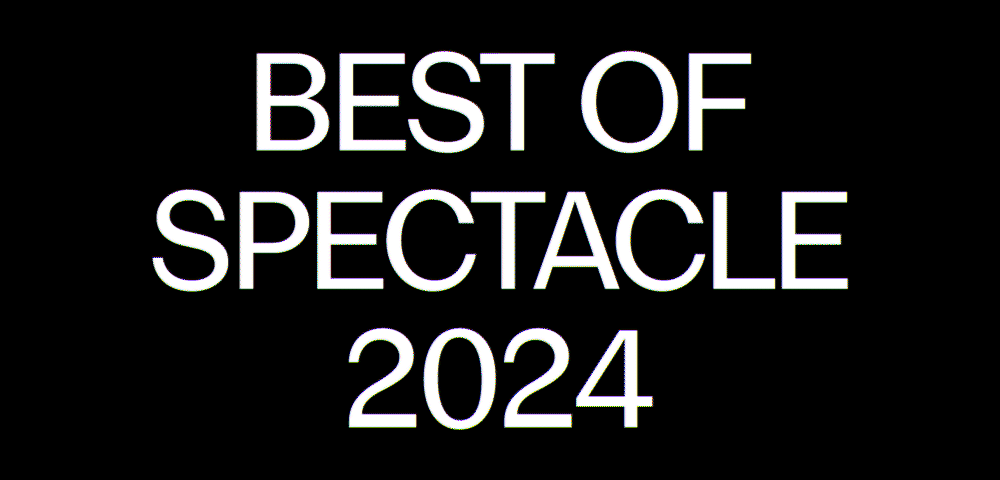
As is our annual tradition, Spectacle begins the New Year by looking back at the best programs and films of the previous year. In case you either missed them the first time around, need to see them again, or want to drag your friends to their next favorite flick. All January, we will be encoring our favorites as voted on by the collective of volunteers and our members. Become a member today for your eligibility to vote in the next BEST OF, and get excited for another year of programming from New York City’s best volunteer-run cinema operated in a former bodega.
The BEST OF SPECTACLE Class of 2024:
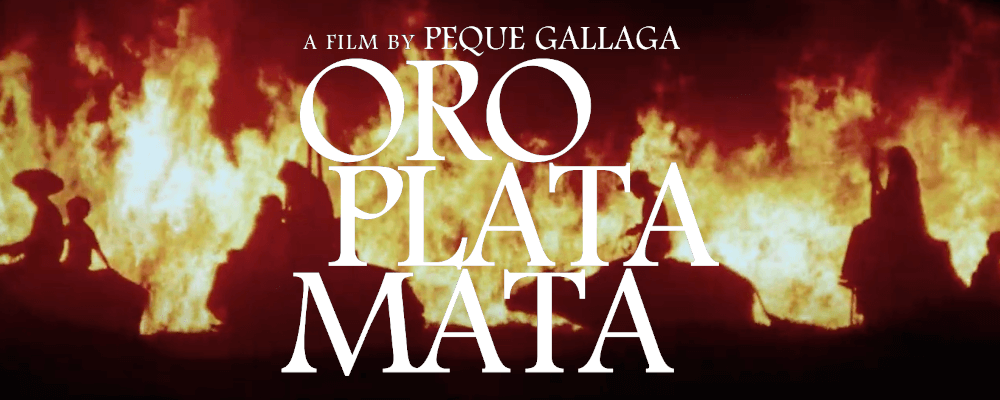
ORO PLATA MATA
(GOLD, SILVER, DEATH)
Dir. Peque Gallaga, 1982.
Philippines. 194 min.
In Filipino with English subtitles.
SUNDAY, JANUARY 05 – 7:30 PM
THURSDAY, JANUARY 16 – 7:30 PM
FRIDAY, JANUARY 31 – 10:00 PM
BUY TICKETS
Regionally acclaimed director Peque Gallaga’s ORO, PLATA, MATA represents, in its first screening in the United States since 1983, an underseen gem of Filipino cinema. It is a film that elegantly charts the complexities and realities of Filipino class dynamics, masculinities and femininities in a thoroughly alive, brutal and passionate period piece following two land owning aristocratic families set just before and during the Japanese occupation of the country in WWII. With blood, gore, violence of reprehensible sorts, and possibly unsimulated sex scenes, this is maximalist unafraid-to-be-unrestrained-about-passions cinema, Filipino-style. Very possibly the late director’s, passing recently in 2020, magnum opus, along with the great SCORPIO NIGHTS (1985).
Special thanks to ABS-CBN, Sagip Pelikula, Leo Katigbak, Julie Galino, Enrico Po, Steve Macfarlane, Connor Burns, Liz Purchell, Brandon Tilghman, August Dunson, Wanggo Gallaga and Joel Torre.
Originally screened in April 2024.

RAVE MACBETH
Dir. Klaus Knoesel, 2001
Canada & Germany. 87 min.
In English
FRIDAY, JANUARY 03 – MIDNIGHT
SATURDAY, JANUARY 11 – 7:30 PM
WEDNESDAY, JANUARY 15 – 10:00 PM
TUESDAY, JANUARY 21 – 7:30 PM
BUY TICKETS | WATCH TRAILER
Rave King Dean employs his two closest men—Marcus and Troy—to supply the floor with the ecstasy they crave. Driven mad by their newly gifted enterprise, the two men soon find their PLUR lives crumble into a deadly feud, encouraged by intoxicating promises of power and glory by three mysterious rave witches.
Although the title of “First Digital Film” is still up for debate, RAVE MACBETH has a pretty valid claim to the throne—the first to be produced, filmed, and edited entirely in digital. What’s not up for debate is this: RAVE MACBETH is certainly the first all-digital Shakespeare adaptation set on the dancefloor, and we think that’s all that matters here. Please join us at Spectacle for an exciting new digital restoration of RAVE MACBETH, the heart-racing and body-moving technodelic tale of love, murder, and ecstasy that you never knew you needed.
Originally screened February 2024.

LOGISTICS
Dirs. Erika Magnusson and Daniel Andersson, 2012.
Sweden, Germany, Netherlands, Spain, China. 52,420 min.
Silent.
WILL BE STREAMING LIVE AND FOR FREE STARTING JANUARY 2ND AT 4PM EST
WATCH HERE!
“At the same time that André Bazin recognized cinema as ‘the instrumentality of a nonliving agent,’ he argued that it fulfilled a primordial human wish to preserve one’s likeness against the passage of time, the body of film standing in for the body of one’s material identity. For Hugo Münsterberg, photoplays reduplicated outside us the internal faculties of memory, imagination, and attention. For Epstein, film magnified for us. For Eisenstein, it shocked us. Theory throughout the celluloid era affirmed that all that was cinematic returned to us. Whatever commensurability must have been sustained to assure this mapping of viewer and image, however, appears to have slipped away in LOGISTICS, a film that, properly speaking, no human being can endure.” —Kyle Stine
Taking the meaning of slow cinema to its extreme at a runtime of 37 days and nights, LOGISTICS is as banal, unfathomable, and sublime to comprehend as global trade itself. The film outlines the reverse journey of a pedometer, from a warehouse in Sweden to a factory in China, the bulk of which is captured over a month from a fixed angle aboard the cargo vessel Elly Maersk –a member of the largest class of ships at the time of shooting. This raw real time transit is, of course, impossible to fully intake in a single sitting, or to appreciate as a lone spectator.
To screen LOGISTICS in any context requires an exercise of logistics itself, and thanks to the generosity and support of the filmmakers, Spectacle will showcase the film from a continuous stream on our website, beginning on January 2nd at 4pm EST and ending on February 6th.
You will have the opportunity to watch Elly Maersk’s two-day stoppage in Spain due to a dock workers’ strike and the Arab Spring, its subsequent hours-long passage through the Suez Canal, and many more moments numbly bland and staggeringly beautiful. We encourage you to do so alongside eating, bathing, commuting, working, shitting, and any other activities you may think of. Please use the stream’s chat feature to make new friends and catch them up on anything they may have missed.
Originally streamed in July 2024 as part of Heavy Metal Containers.
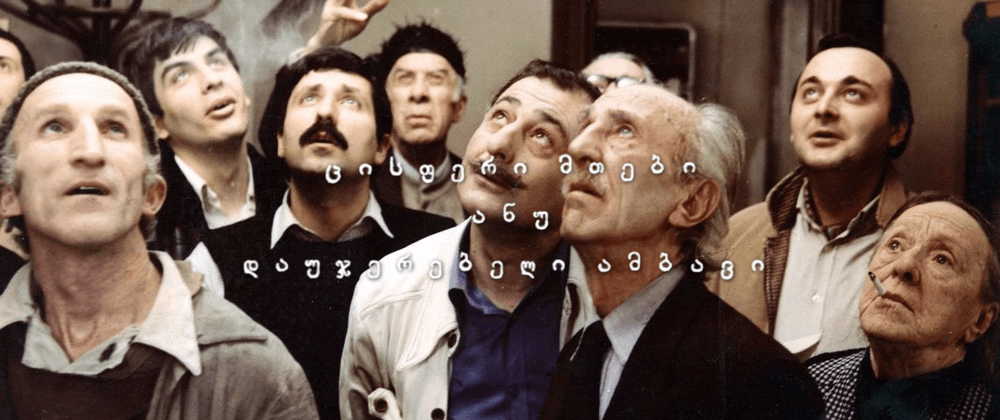
BLUE MOUNTAINS, OR UNBELIEVABLE STORY
(ცისფერი მთები ანუ დაუჯერებელი ამბავი)
Dir. Eldar Shengelaia, 1983.
Georgia. 97 min.
In Georgian with English subtitles.
MONDAY, JANUARY 06 – 7:30 PM
TUESDAY, JANUARY 14 – 10:00 PM
FRIDAY, JANUARY 24 – 7:30 PM
THURSDAY, JANUARY 30 – 10:00 PM
BUY TICKETS
The film concerns a young writer, Soso, attempting to get his novel—the titular Blue Mountains—read by the editorial board of a state-run publishing company. His hopes are dashed in a comedy of errors as his attempts to have the manuscript reviewed are thwarted by everyone else’s preoccupations: chess games, lunches, vacation time, suspicious husbands, constant meetings, the vibrations from neighboring games of motoball (or is it the subway?), and most importantly, a painting of Greenland threatening to fall from its precarious perch.
Seasons pass as Soso’s visits to his publisher grow increasingly hectic and frustrating as he bounces from office to office, and nothing seems to progress or get done. Like the bureaucracy stifling Soso’s progress, where everyone is looking up at someone else to pass the buck to, the employees’ eyes are literally looking upward as the ceiling in the building cracks and plaster rains down upon them. Will they do anything to stop the impending doom? Or will their reliance on the system be their downfall?
The film’s popularized English title uses “unbelievable” to describe the story, whereas “improbable” or “incredible” may be a more apt translation. Considering this is Shengelaia’s last film before entering Georgian Parliament 6 years later, one can infer that his treatment by, and experience with, the bureaucracy of the Soviet film industry spurred this poison pen classic.
Originally screened in September 2024 as part of Shengelaia’s Georgia: The Films of Eldar Shengelaia.
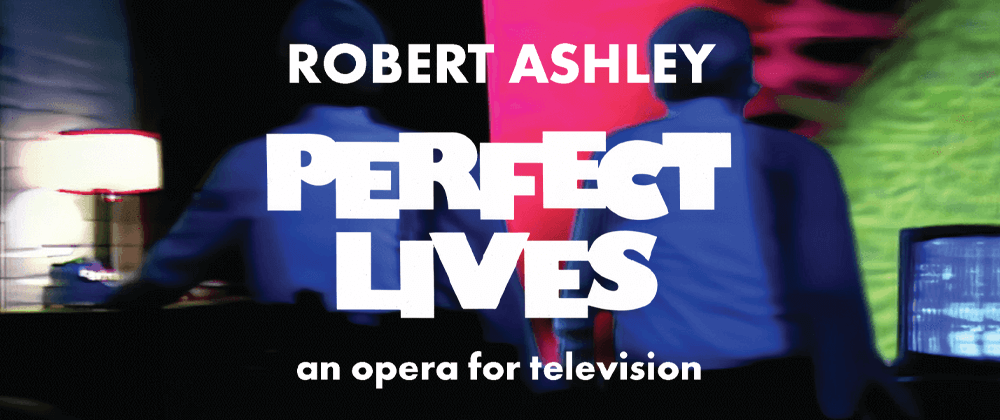
PERFECT LIVES: AN OPERA FOR TELEVISION BY ROBERT ASHLEY
Dir. John Sanborn, 1983.
United States. 183 min.
In English.
THURSDAY, JANUARY 23 – 7:30 PM
SUNDAY, JANUARY 26 – 7:30 PM
BUY TICKETS
Spectacle is thrilled to present this series of screenings commemorating the 40th anniversary restoration of Robert Ashley’s seminal seven-part television opera, PERFECT LIVES. Commissioned by The Kitchen in 1978 and produced over the span of four years, the piece was adapted for television in 1983 in collaboration with video artist, John Sanborn. The resulting seven-episode series stands as one of the most unique and ambitious projects to in the history of broadcast television, intertwining spoken-word narratives, musical textures, and hypnotic analog video compositions to form what Ashley has described as a “comic opera about reincarnation”.
In a loose sense, the series follows lounge singer, “R” (Ashley), and his friend “The World’s Greatest Piano Player”, Buddy (“Blue” Gene Tyranny), as they hatch plans to commit the perfect crime (“metaphor for something philosophical”) alongside the son and daughter of the local sheriff, Isolde (Jill Kroesen) and “D” (David van Tieghem). Yet to say that Ashley’s opus is “about” one particular narrative or theme or even medium, would be a disservice to its beautifully digressive nature. Ashley’s narration, accompanied by Tyranny’s and Peter Gordon’s musical soundscapes, flows effortlessly between settings and subjects, sincerity and satire, to create a constantly unfolding image of 20th century Americana.
PERFECT LIVES has been been described as “the most influential music/theater/literary work of the 1980s”. A quintessentially “American” work of art, not just in its vernacular language and skewering of Midwestern ennui, but also in its television format— described in Fanfare as catered specifically to American attention spans— in which Ashley adopts similar editing techniques and effects used in commercials to appeal to the viewer’s subconscious association between the comforts of consumerism and the broadcast television format.
“What about the Bible? And the Koran? It doesn’t matter. We have PERFECT LIVES”
—John Cage
This program would not be possible without the generous support of Lovely Music and Performing Artservices.
Originally screened in February 2024.
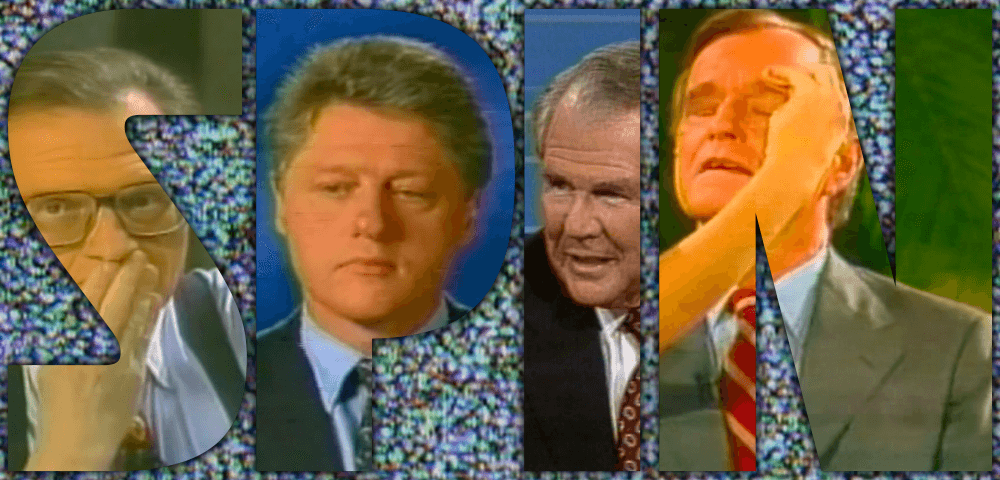
SPIN
Dir. Brian Springer, 1995
United States. 57 min.
In English.
THURSDAY, JANUARY 02 – 10:00 PM
MONDAY, JANUARY 06 – 10:00 PM
FRIDAY, JANUARY 10 – MIDNIGHT
SATURDAY, JANUARY 25 – 10:00 PM
BUY TICKETS | WATCH TRAILER
During the year leading up to the 1992 Presidential election, artist Brian Springer spent his time tuning into satellite feeds used by the campaigns and the television networks that were not intended for public consumption, but were available to those with the know-how and the technological means to intercept them. The footage collected and Springer’s commentary shine a light on the manipulative practices of mass media. Pulling the mask back on the insidious system that silences public debate and shuns anyone outside the inner circle of those manufacturing the news; politicians, journalists, spin doctors, and televangelists. It is truly a must see for any paranoiac.
SPIN’s revelations highlight the fact that the job of President is really more about presentation, look, and likeability than it is policy. And that it is more in line with the job description of an actor, or television host/personality. Seeing the entertainment-ification of the presidential election which we now cannot escape from. In addition to the main characters of the election, George Bush Sr., Bill Clinton, and even Al Gore and Larry King, SPIN also looks at the events of the Los Angeles Rodney King riots and its racist portrayal by the news media as well as the unsuccessful presidential bid by Larry Agran, who was ignored and excluded by the media despite his polling numbers.
Brian Springer is an artist, educator, and documentarian, working primarily in video, sound and performance. Springer has exhibited internationally, and taught at a number of institutions across the States.
Special thanks to Video Data Bank.

Originally screened in November 2024 as part of the Satellites of Cynicism: 2024 1992 Election Special.
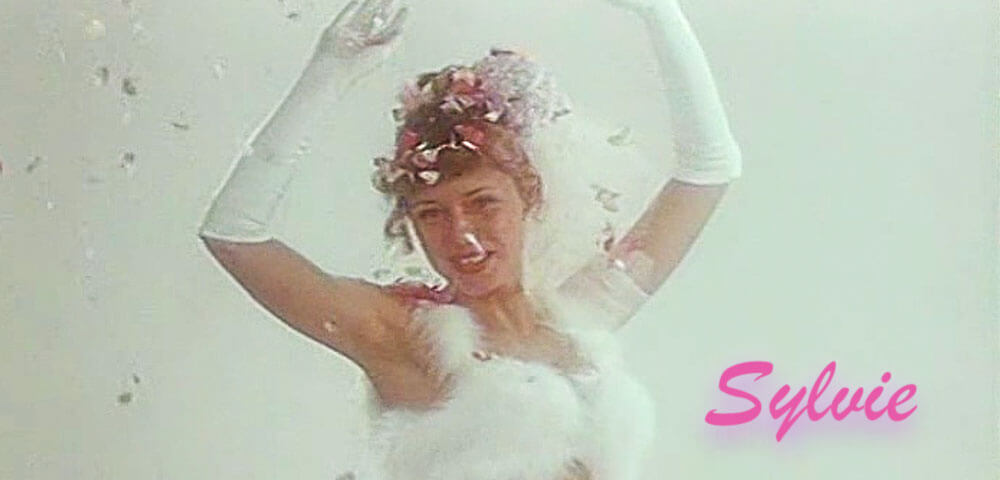
SYLVIE
Dir. Klaus Lemke, 1973.
Germany. 86 min.
In German with English subtitles.
SATURDAY, JANUARY 11 – MIDNIGHT
FRIDAY, JANUARY 17 – 7:30 PM
WEDNESDAY, JANUARY 22 – 10:00 PM
SUNDAY, JANUARY 26 – 5:00 PM
BUY TICKETS | WATCH TRAILER
World-class fashion model Sylvie’s nightmares are plagued by blazing plane wreckages. After falling asleep drunk in the cab of Munich taxi driver Paul, she awakens, beginning a torrid, impossible, ill-advised love affair with the scruff cabbie. She’s in love with him, he’s in love with the sea…Can anything good come of this?
Actress (and real life model/shaman) Sylvie Winter turns in a deeply-felt performance against the equally charismatic Paul Lys, and the on-screen connection they share rivals some of the greats. Klaus gives their chemistry room to flourish, set to the oft-repeated saccharine dulcets of the Stones’ “Back Street Girl”. Filled with plenty of “girl…him?” moments, this frenetic flick also boasts an all-time “New York” shot, one that you’ll never forget.
Originally screened in February 2024 as part of The Pope of Kitsch: Klaus Lemke.
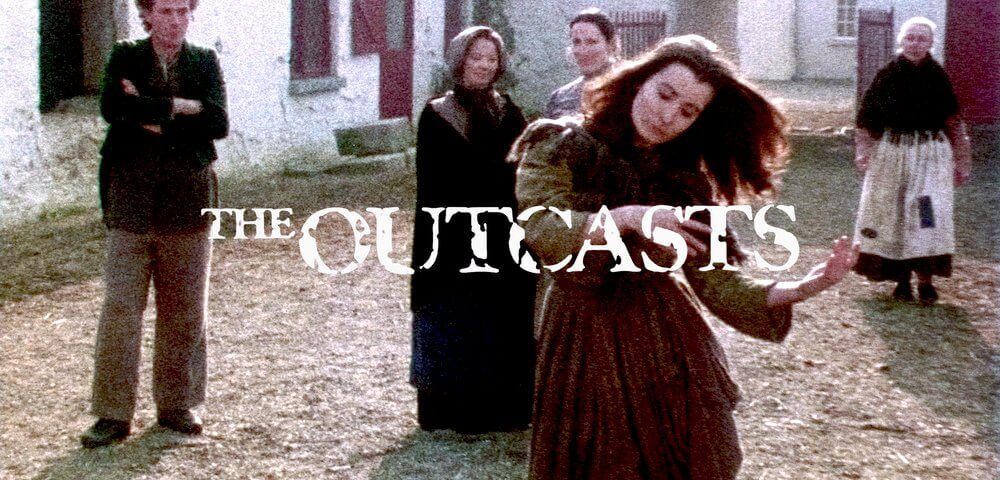
THE OUTCASTS
Dir. Robert Wynne-Simmons, 1982.
Ireland. 95 min.
In English.
FRIDAY, JANUARY 10 – 7:30 PM
MONDAY, JANUARY 13 – 7:30 PM
TUESDAY, JANUARY 21 – 10:00 PM
WEDNESDAY, JANUARY 29 – 10:00 PM
BUY TICKETS | WATCH TRAILER
Spectacle is thrilled to host the United States premiere of a new restoration of Irish filmmaker Robert Wynne-Simmons’ long-unavailable gothic masterpiece THE OUTCASTS.
Rich in earthy pastoral detail, THE OUTCASTS is a slow-burning feminist film disguised as a piece of folk horror. Set in 1810, the film depicts a remote farming community which is thrown into crisis by the arrival of a charismatic, wandering fiddler named Scarf Michael (Mick Lally). Most enamored by him is Maura (Mary Ryan), the daughter of an impoverished farmer, noted and often ridiculed among the townsfolk for her slowness and shyness. Maura gravitates to Scarf against the wishes of her family and neighbors, and is soon suspected of practicing witchcraft in her own right. As she suffers scapegoating from her community for being “mad”, Maura pushed further to the margins.
Before making his directorial debut with THE OUTCASTS, Wynne-Simmons was one of the screenwriters on Piers Haggard’s infamous THE BLOOD ON SATAN’S CLAW (1971), a similarly windswept cult film steeped in mythology (albeit on the British, not Irish, countryside.) Seamus Corcoran’s telephoto cinematography and the unfakeable locations of Ireland lend THE OUTCASTS the quality of a 95-minute dream (or nightmare) sequence in the vein of McCABE & MRS. MILLER or PICNIC AT HANGING ROCK, like a fairy tale hazily remembered. Ultimately, THE OUTCASTS is an unsparing and mesmerizing parable of stigma, prejudice, faith and tradition, interrogating how and why people become monsters in the eyes of others.
At the time of its release, THE OUTCASTS was the first fully Irish-funded film in over half a century. Spectacle is honored to host the United States premiere of the new 2K digital restoration by the Irish Film Archive for IFI’s Digital Restoration Project, painstakingly scanned from original 35mm negatives (which were, themselves, printed from blown-up 16mm film.) The restoration was funded by Screen Ireland/Fís Éireann with further support from Association des Cinémathèques Européennes (ACE) and EU Creative Europe MEDIA programme.
Special thanks to Robert Wynne-Simmons, Eleanor Melinn and Sunniva O’Flynn (Irish Film Institute), and Dennis Bartok and Craig Rogers (Deaf Crocodile).
Originally screened in October 2024.

GOIN’ ACROSS THE MOUNTAINS: THE FOLK MUSIC OF APPALACHIA
THURSDAY, JANUARY 02 – 7:30 PM
SUNDAY, JANUARY 05 – 5:00 PM
MONDAY, JANUARY 20 – 7:30 PM
TUESDAY, JANUARY 28 – 7:30 PM
BUY TICKETS | WATCH TRAILER
The Appalachian region of America stretches from northern Alabama to central New York and is home to countless artistic traditions, from quilting to clog dancing, dulcimer crafting to wood flute carving. Centuries of crisis, beginning with the displacement of native communities by white settlers, then the Civil War, industrialization and the labor struggles that followed, to the present-day opioid epidemic and rustbelt economic policies, have formed stories and traditions that are at once isolated from, yet central to, the broader history of the United States. In the two documentaries BLUEGRASS ROOTS and APPALACHIAN JOURNEY , Spectacle presents a sampling of these stories, traditions and ways of life found in the hills to the West.
BLUEGRASS ROOTS
Dir. David Hoffman, 1965
United States. 44 min.
In English.
In his first film, David Hoffman traversed the Blue Ridge Mountains, searching for and documenting the unique musical tradition of American Appalachia. Guided by the folklorist Bascom Lunsford and his wife Nellie, we are introduced to banjo pickers, dulcimer slappers, clog-shoed steppers and moonshining yodelers. In contrast to the Alan Lomax documentary, Hoffman is a one-man crew, shooting on 16mm film and opting to let his guides conduct the interviews.
APPALACHIAN JOURNEY
Dir. Mike Dibb, Mark Kidel, Alan Lomax, 1990
United States. 56 min.
In English.
In this short documentary originally produced for television, Alan Lomax delves into the culture of Appalachia, demonstrating his deep knowledge of instrumentation, folk art and American anthropology. While mostly focusing on the musical traditions of the region, Lomax also turns his attention towards broader socio-economic issues such as prohibition, strip-mining and land theft, first from indigenous peoples and now those living in the mountains in the twentieth century. A quarter decade separates Hoffman and Lomax’s films. As a result, APPALACHIAN JOURNEY is able to document the effects of economic decline in the last few years before the opioid crisis began its decades long devastation of the region.
Originally screened in February 2024.

NEKO-MIMI
(猫耳)
Dir. Jun Kurosawa, 1993.
Japan. 80 min.
In Japanese with English subtitles and English intertitles.
SATURDAY, JANUARY 04 – MIDNIGHT
MONDAY, JANUARY 13 – 10:00 PM
SUNDAY, JANUARY 19 – 5:00 PM
FRIDAY, JANUARY 31 – 7:30 PM
BUY TICKETS | WATCH TRAILER
“Why this farce, day after day?”
NEKO-MIMI is the only feature-length directorial effort of by the prolific experimental filmmaker Jun Kurosawa (b. 1964), who also acts as cinematographer, editor, co-writer, and composer. Kurosawa set out to create “the most beautiful cinema crystal” that would remain after eliminating the usual things that make a narrative film “work”: “human emotions, time, space, and montage.”
The film begins with excerpts from Samuel Beckett’s ENDGAME and continues in the same absurdist and apocalyptic vein: Think E. Elias Merhige’s BEGOTTEN by way of Alan Schneider and Beckett’s FILM, but with lush color photography and a characteristic Kurosawa soundscape that undulates between drones, choral passages, field recordings and harsh noise (reminiscent of his one-time collaborator Merzbow).
NEKO-MIMI, which translates to “cat ear,” is the dreamlike tale of three girls and a boy whose existences are spent playing games in a space resembling the ruins of a laboratory. Endless repetitions distort their senses of past, present, or future. They playfully toy with a body, dissecting its eyeballs and other parts. Surrounded by cameras, photographs, film, and projectors, the subjects embrace their surveillance, predicting our present panopticon.
Rarely seen outside of Japan since being presented at the 1993 International Film Festival Rotterdam, Spectacle is excited to present NEKO-MIMI in a recent digital restoration from a 16mm print.
Special thanks to Kraut Film.
Originally screened March 2024.
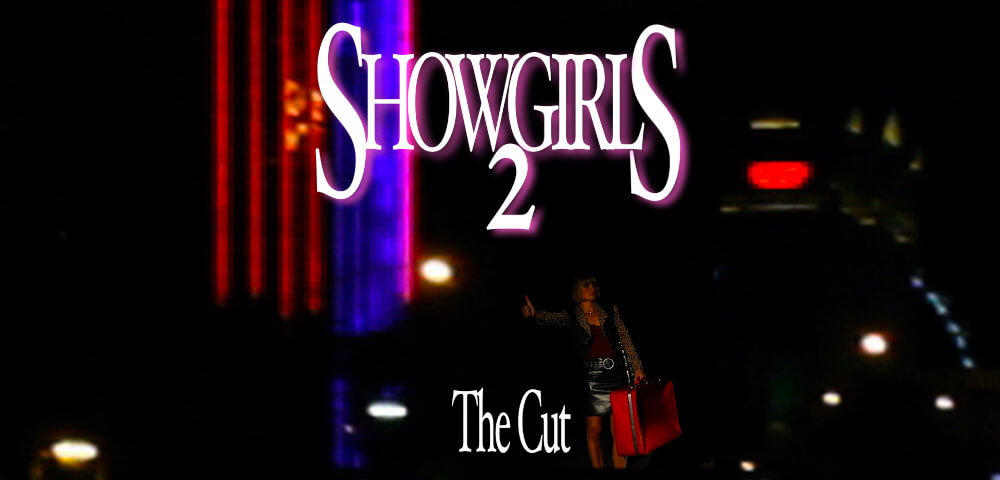
SHOWGIRLS 2: PENNY’S FROM HEAVEN (THE CUT)
Dir. Rena Riffel, 2011.
United States. 100 min.
In English.
THURSDAY, JANUARY 09 – 10:00 PM
SATURDAY, JANUARY 11 – 10:00 PM
SATURDAY, JANUARY 25 – MIDNIGHT
BUY TICKETS
Reprising her role from the Paul Verhoeven 1995 trashsterpiece, Rena Riffel stars as Penny in a “satirical parody project” intent on both pleasing and confusing fans of Rena’s work. A wholly unholy fusion of SHOWGIRLS’ high camp and MULHOLLAND DRIVE’S nightmarish heartache.
After originally debuting at Spectacle in 2013, we are happy to reintroduce SHOWGIRLS 2 to a completely new generation of filmgoers in a completely new way in a completely new cut, with completely new footage never seen before! For all Rena Riffel completionists!
Originally screened in July as part of the series Rena Riffel: A True Artist.
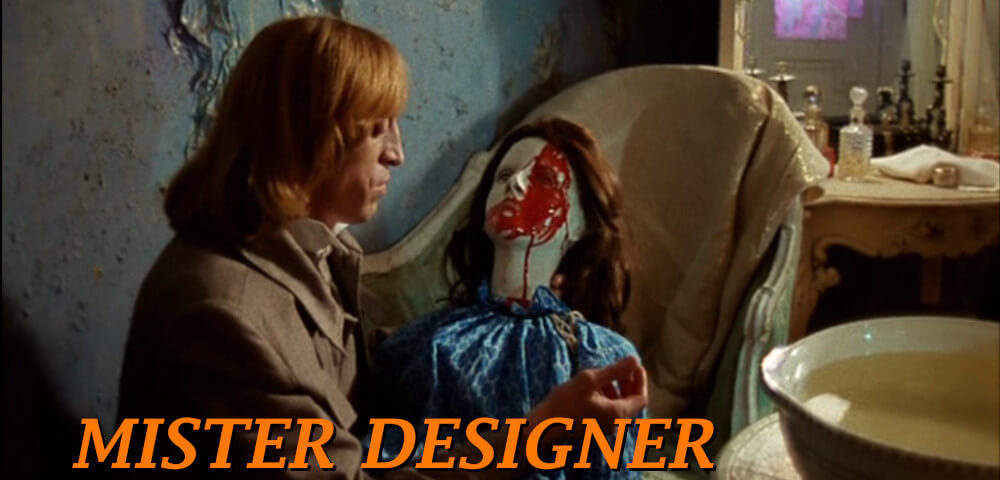
MISTER DESIGNER
(Господин оформитель)
Dir. Oleg Teptsov, 1987.
Soviet Union. 103 min.
In Russian with English subtitles.
TUESDAY, JANUARY 7 – 10:00 PM
FRIDAY, JANUARY 17 – 10:00 PM
FRIDAY, JANUARY 24 – MIDNIGHT
WEDNESDAY, JANUARY 29 – 7:30 PM
BUY TICKETS
Set in the last days of tsarist Russia, MISTER DESIGNER traces the meticulously choreographed decline of a St. Petersburg aesthete determined to realize his defining masterwork while navigating an unhealthy fixation on mannequins. The execution of the film mirrors the baroque inclinations of the protagonist, lingering on meticulously composed tableaux vivant staged in lavish aristocratic interiors, frequently stalling the languid action to present confounding allegories in the form of expressionist dance interludes.
Originally screened in December 2023 as part of the series Late Soviet Symbolism: A Bloc-gothic Double Feature.
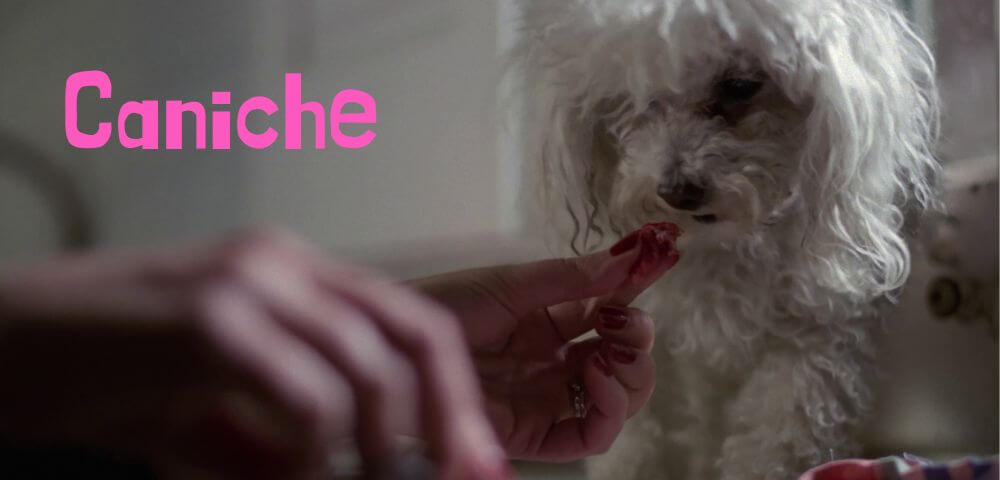
CANICHE
(POODLE)
Dir. Bigas Luna, 1979.
Spain. 90 min.
In Spanish with English subtitles
FRIDAY, JANUARY 03 – 7:30 PM
WEDNESDAY, JANUARY 08 – 7:30 PM
BUY TICKETS
WEDNESDAY, JANUARY 22 – 7:30 PM, with Q&A with Santiago Fouz Hernández (Professor Durham University and author of forthcoming book The Films of Bigas Luna), this event is $10
BUY Q&A TICKETS
Brother and sister Bernardo (Ángel Jové) and Eloisa (Consol Tura) lead a cloistered existence in a crumbling Catalan mansion where they subsist on the charity of their wealthy aunt as they await the inheritance they’ll receive from her death. They lavish their attention and affection on their pet poodle Dany, sublimating erotic desires onto their canine companion. Dany is the witness to and the victim of their downward spiral of debasement, which only accelerates as their financial fortunes grow.
Bigas Luna’s odyssey of the perverse continues in CANICHE, a provocative and perturbing dissection of the incestuous, cannibalistic and bestial bourgeoisie.
“…[CANICHE is] the spiritual sister of the John Waters films FEMALE TROUBLE (1974) and DESPERATE LIVING (1977). The first three Bigas Luna films are just as corrosive, free-spirited and punk as Waters’ films from the seventies; they seduce us with a dirty realism -very pop- which turns beautiful and causes Stendhal syndrome.”
—Xavi Sánchez Pons
The
Special thanks to Santiago Fouz-Hernández, Carolina Sanabria and Casilda García López.
Originally screened in April 2024 as part of The Early Obsessions of Bigas Luna.
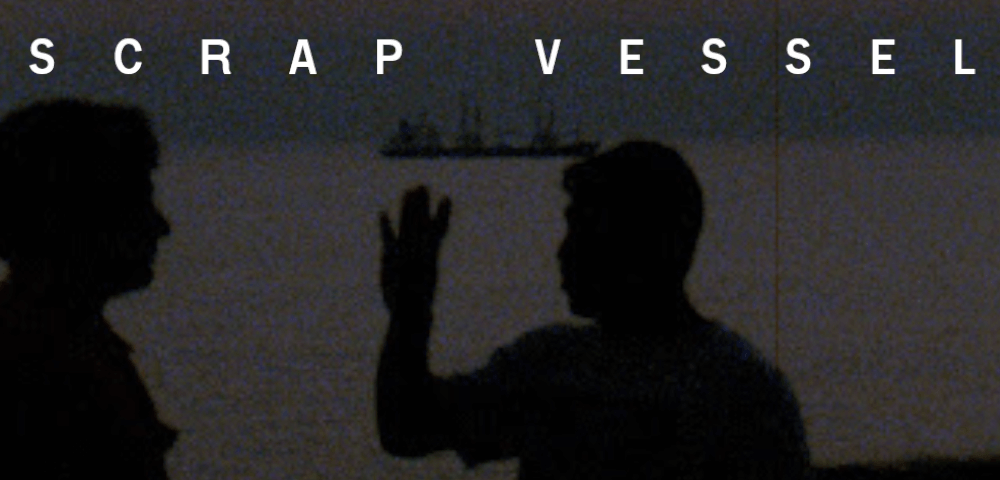
SCRAP VESSEL
Dir. Jason Byrne, 2009.
United States, Singapore, Bangladesh, India. 51 min.
In English, Mandarin, Bangla, and Hindi with English intertitles.
FRIDAY, JANUARY 10 – 10:00 PM
TUESDAY, JANUARY 28 – 10:00 PM
BUY TICKETS
SUNDAY, JANUARY 19 – 7:30 PM, with Director Q&A, this event is $10
BUY Q&A TICKETS
SCRAP VESSEL details the death and memories of a haunted Chinese coal freighter ship named Hupohai (formerly the Bulk Promotor during the start of its life in Norway) during its terminal passage from Singapore to the scrap yards of Bangladesh. Shot on 16mm that was rephotographed repeatedly to generate deep grainy contrasts, Byrne creates a fragmentary visual diary of his exploration of the near-derelict behemoth, where he and the crew uncover an archive of photographs, music tapes, and film reels left behind by Hupohai’s former residents. While the the trip to Chittagong may recall the conclusion to Peter Hutton’s 2007 AT SEA, Byrne shot SCRAP VESSEL three and half years prior and spent the subsequent years figuring out how to assemble its footage. The result is starkly unique in its sombre, gothic qualities, elevated by Albert Ortega’s ambient score.
Jason Byrne will be tele-present for a virtual Q&A following the 7:30pm screening on Sunday, January 19th.
Originally screened in July 2024 as part of Heavy Metal Containers.
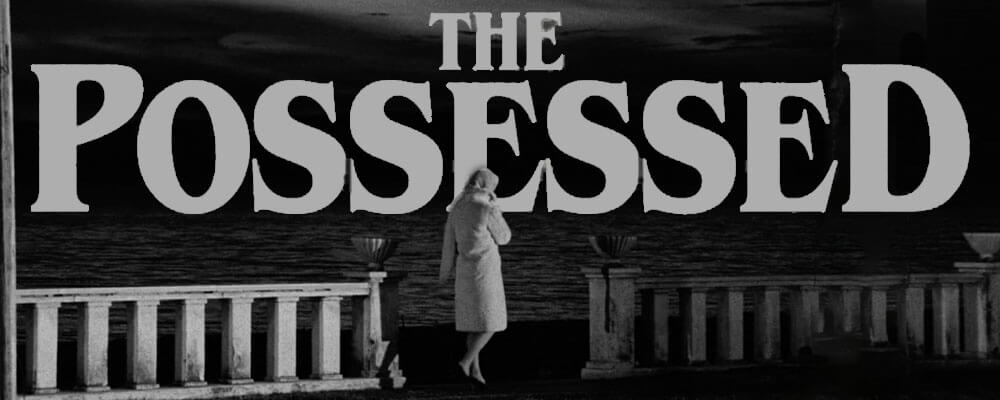
THE POSSESSED
(AKA LA DONNA DEL LAGO)
(AKA THE LADY OF THE LAKE)
Dirs. Luigi Bazzoni and Franco Rossellini, 1965.
Italy. 94 min.
In Italian with English subtitles.
FRIDAY, JANUARY 03 – 10:00 PM
SUNDAY, JANUARY 12 – 5:00 PM
MONDAY, JANUARY 20 – 10:00 PM
BUY TICKETS | WATCH TRAILER
Upon returning to a sleepy lakeside town, a writer learns that the woman he had been infatuated with has died by suicide. Devastated by the news, he investigates her death and soon discovers a dark secret.
Bazzoni’s first feature-length film, THE POSSESSED, is a mastery of slow-burn mystery and suspense. The film delivers classic Noir tropes – a sad investigator, a mysterious woman, and a dead body – with flashes of excessive violence and a hint of the supernatural, foreshadowing the future of Giallo.
Thematically and tonally similar to Bazoni’s later film LE ORME, THE POSSESSED plunges the audience into a familiar tale of deception and self-doubt. Whereas LE ORME relied on color to create the film’s dream-like aesthetic, Bazzoni shot THE POSSESSED in black and white. The cinematography gives THE POSSESSED a haunted quality that accentuates the ominous atmosphere, resulting in a tone closer to a nightmare than a dream.
Originally screened in March 2024 as part of the series The Masters of Italian Exploitation: Luigi Bazzoni.
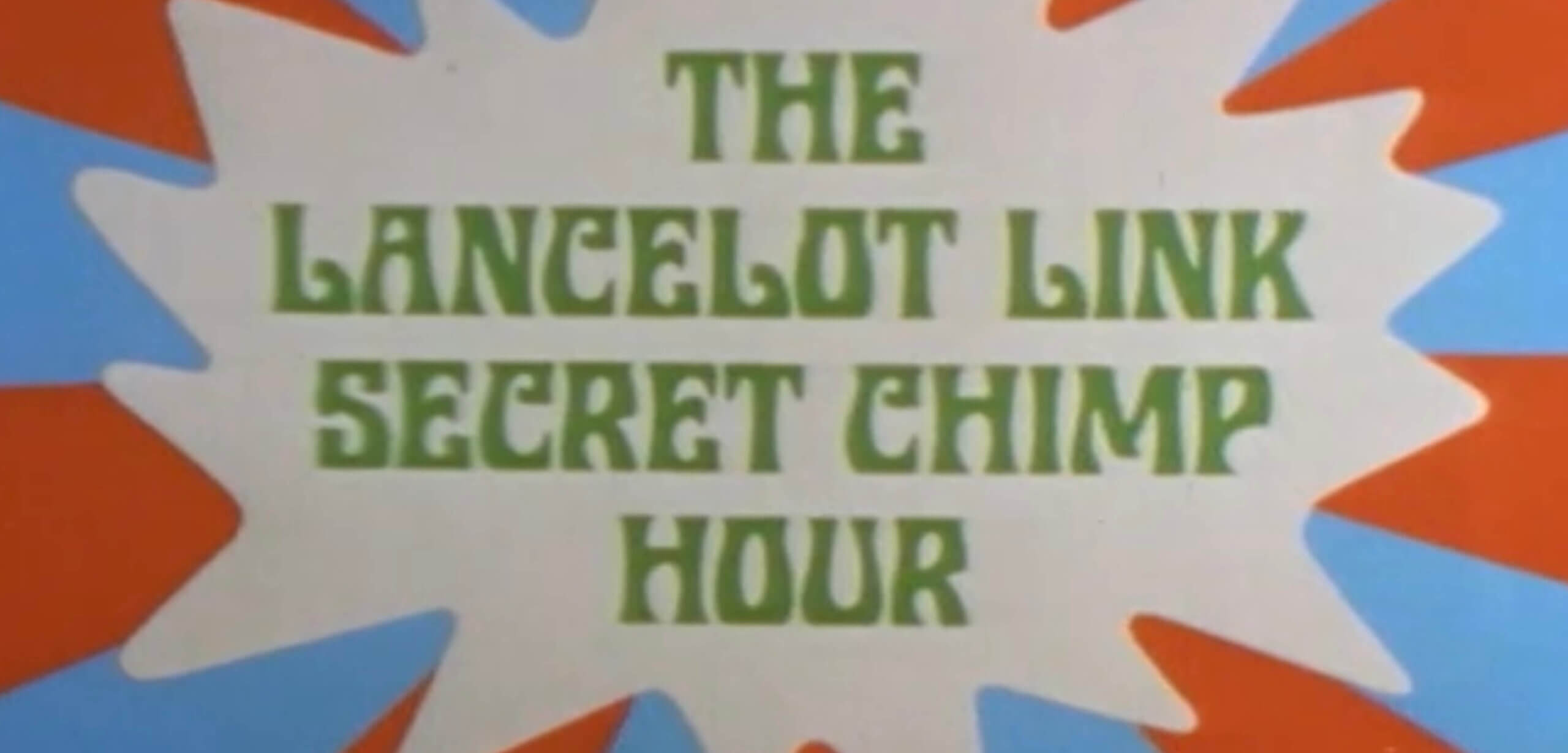
THE LANCELOT LINK, SECRET CHIMP
SATURDAY, JANUARY 18 – 3PM TO MIDNIGHT
$5 PER SCREENING or $25 FOR FULL-DAY PASS
BUY DAY PASS
For those unfamiliar with LANCELOT LINK, SECRET CHIMP (1970), it is a televisual James Bond spoof with a cast composed entirely of chimpanzees. Over the course of 17 episodes, we follow the top agents at the Agency to Prevent Evil (APE): Lancelot Link and Mata Hairi. Under the leadership of Commander Darwin, they are tasked with saving the planet from falling into the hands of Baron Von Butcher, the nefarious ape behind the Criminal Headquarters for the Underworld Master Plan (CHUMP).
On January 18, 2025, we will be kicking off our LANCELOT LINK, SECRET CHIMP marathon at 3 PM. We will present two episodes per hour until the grand finale at 11pm. Episode synopses and estimated start times can be found here.
Originally screened in April 2024.
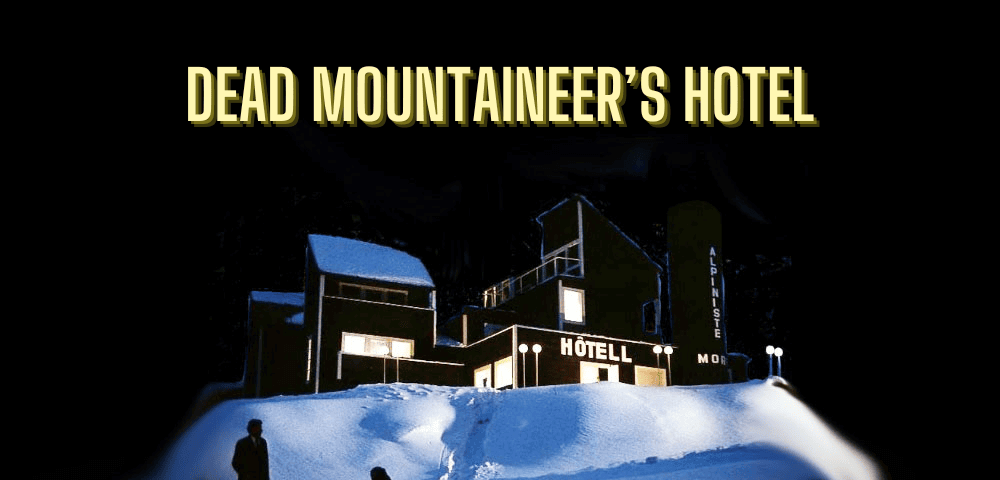
DEAD MOUNTAINEER’S HOTEL
(HUKKUNUD ALPINISTI HOTELL)
Dir. Grigori Kromanov, 1979.
Estonia. 84 min.
In Estonian with English subtitles.
TUESDAY, JANUARY 07 – 7:30 PM
FRIDAY, JANUARY 24 – 10:00 PM
THURSDAY, JANUARY 30 – 7:30 PM
BUY TICKETS
Returning to Spectacle after 12 years, DEAD MOUNTAINEER’S HOTEL is a sleek blend of thriller, noir, and science fiction based on the Strugatsky brothers’ novel of the same name. Opening with a winding upward mountain drive, we meet Inspector Peter Glebsky en route to respond to an anonymous tip at an isolated hotel in the Alps. Though all seems well upon arrival, he opts to stay the night and finds himself trapped by an avalanche with his bizarre fellow guests. It soon becomes clear that everything is not as it seems.
The hotel itself is a marvel of modern architecture in black and neon set sharply against bright, pristine snow, while its interior brings to mind the unforgettable and deeply ’70s mise-en-scene of cult classics like MESSIAH OF EVIL. The score by pioneering Estonian synth programmer and prog rocker Sven Grünberg, composed on an EMS Synthi 100, is an ethereal auditory dreamscape.
Special thanks to the Estonian Film Institute.
Originally screened in April 2024 as part of the series Synthesizer Cinema.
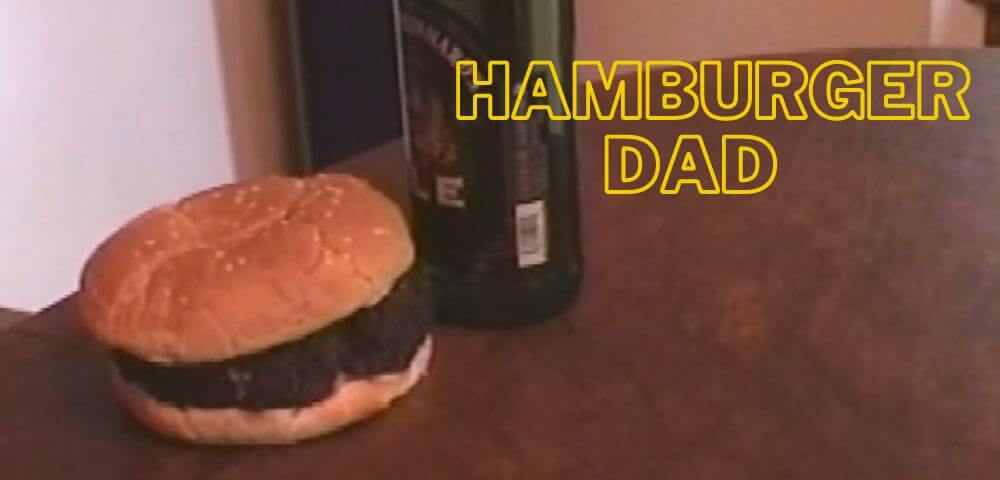
HAMBURGER DAD
Dir. Kevin Clarke, Wil Long, 2003.
United States. 52 min.
In English.
WEDNESDAY, JANUARY 08 – 10:00 PM
FRIDAY, JANUARY 17 – MIDNIGHT
MONDAY, JANUARY 27 – 10:00 PM
BUY TICKETS | WATCH TRAILER
Harold Davis wakes up one day to find he has become a hamburger; a Kafkaesque predicament which upends his life at home and at work, stresses family bonds and places him in constant danger of being devoured. Produced for practically no money and shot on Hi-8 analog video in the summer of 2003 by lifelong friends Kevin Clarke and Wil Long, HAMBURGER DAD is a delightfully goofy and unexpectedly touching father-son road movie.
Originally screened in June 2024.

FUNKY FOREST: THE FIRST CONTACT
Dirs. Katsushito Ishii, Hajime Ishimine, and Shunichirô Miki, 2005.
Japan, 150 min.
In Japanese with English subtitles.
THURSDAY, JANUARY 09 – 7:00 PM
SUNDAY, JANUARY 12 – 7:30 PM
BUY TICKETS | WATCH TRAILER
21 episodes. 2 “Sides.” One film like no other.
This WTF classic will make you laugh, cringe, and marvel at the breadth of imagination packed into one feature film. From the hilariously mundane to the unbelievably weird, every moment of this film is unexpected. A trio of directors (Ishii, Ishimine, and Miki) infuse this film with a “funky” musicality and beige mid-aughts vibes. Segments include legends such as Evangelion creator Hideaki Anno, Susumu Terajima and Tadanobu Asano (Ichi the Killer himself!). Come to your favorite microcinema and check out the best sketch comedy movie of the 21st century!
Originally screened in June 2024.

GAMERA: GUARDIAN OF THE UNIVERSE
(ガメラ 大怪獣空中決戦)
Dir. Kaneko Shūsuke, 1995.
Japan. 95 min.
In Japanese with English subtitles.
SATURDAY, JANUARY 4 – 5 PM
BUY TICKETS
GAMERA 2: ATTACK OF LEGION
(ガメラ2 レギオン襲来)
Dir. Kaneko Shūsuke, 1996.
Japan. 100 min.
In Japanese with English subtitles.
SATURDAY, JANUARY 4 – 7:30 PM
BUY TICKETS
GAMERA 3: REVENGE OF IRIS
(ガメラ3 邪神覚醒)
Dir. Kaneko Shūsuke, 1999.
Japan. 108 min.
In Japanese with English subtitles.
SATURDAY, JANUARY 4 – 10 PM
BUY TICKETS
2024 marked a full decade since the release of Gareth Edwards’ attempt to memory-wipe Dean Devlin and Roland Emmerich’s misbegotten GODZILLA (1998). And despite being curiously stiff and overburdened by an ensemble of screaming A-listers, Edwards’ GODZILLA was successful enough to trigger further reexhumations like KONG: SKULL ISLAND, APE VS. MECHA APE, PACIFIC RIM, THE LAKE and 2025 ARMAGEDDON, while Japanese audiences were blessed with SHIN GODZILLA in 2016 and GODZILLA MINUS ONE in 2023, both of which took the radioactive reptile seriously in discretely breathtaking ways.
But even if kaiju season has returned to the world of cinema, the DARK KNIGHT-ification of Godzilla seems to have hit a wall in the Legendary/Warner Brothers “Monsterverse”, as each of those movies tend to feature their version of “Godzilla” onscreen for about fifteen minutes or less. Thus, it feels like a strange blessing that Gamera – giant firebreathing turtle, friend to children worldwide, and Godzilla’s most formidable competitor outside the Toho constellation of monsters – is yet to receive a full CGI makeover or, worse yet, American “reboot”. (To commemorate the half-centennial of Gamera’s debut in 1965, Gamera’s rightsholders did commission a quite promising trailer from filmmaker Katsuhito Ishii, but pulled the plug on the project thereafter.)
For these reasons, it feels like a better time than ever to reexamine the trilogy of Gamera films made by Shūsuke Kaneko between 1994 and 1999, glorious remnants of the late pre-digital era of kaiju cinema regarded by fans as some of the greatest monster films ever made.
Originally screened in September 2024.
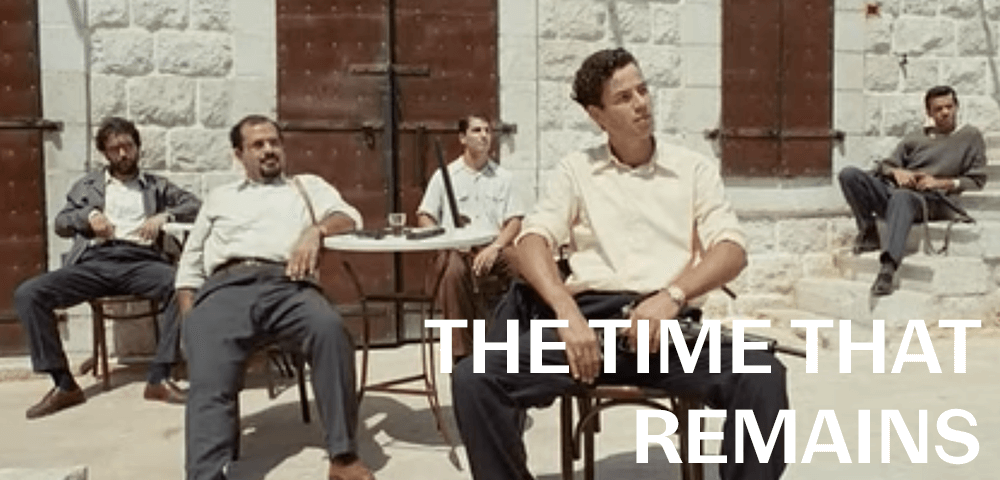
THE TIME THAT REMAINS
(فيلم الزمن الباقي كامل)
Dir. Elia Suleiman, 2009.
France, Belgium, Italy, United Kingdom, United Arab Emirates, Palestine, Israel. 109 min.
In Arabic and Hebrew, with English subtitles.
TUESDAY, JANUARY 14 – 7:30 PM
MONDAY, JANUARY 27 – 7:30 PM
BUY TICKETS
Elia Suleiman’s semi-autobiographical film is, per the director’s own words, “a family portrait and a social portrait” of Palestinian life in the decades following the Arab-Israeli war of 1948. The film casually mounts its drama as a succession of anecdotes which gather into gently traced narrative strands that detail the history of a family and their neighbors living through the second half of a century of tumult. Suleiman, who appears, wordlessly, in the latter half of the film, has often seen his films compared to those of Jacques Tati and Buster Keaton. The comparisons are apt, as his mild-mannered presence, ordered mise-en-scene, and laconic realism pull forth the blackly-comic absurdity of life under occupation.
Suleiman has referred to his presence in the film as a sort of “wingless angel” offering a neutralized gaze, but this is not to say the film is without deep currents of melancholy or anger. These feelings are profoundly present, evinced through the exhausting accumulation of injustice and violence, staged upon a landscape of such striking beauty that it can be difficult to imagine it could sustain such suffering.
Early in the film, a Palestinian man standing before a brigade of Israeli soldiers, concedes his life to his dignity. Before putting the gun to his head, he proclaims:
“I want no life if we’re not respected in our land. If our words are not heard echoing around the world, I shall carry my soul in my palm, tossing it into the cavern of death. Either a life to gladden the hearts of friends, or a death to torture the hearts of foes.”
Originally screened in December 2023 as part of the series You Killed Me and I Forgot to Die: Films of Palestinian Dignity.
